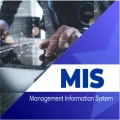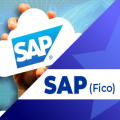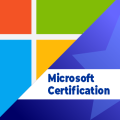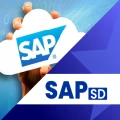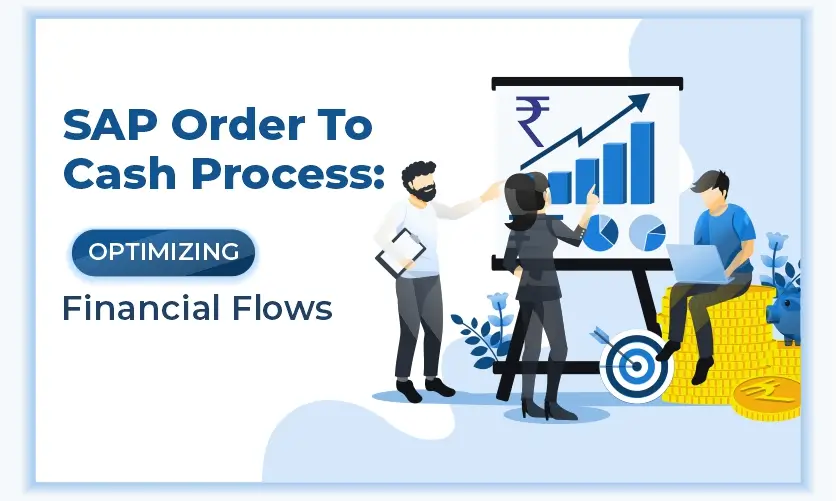
SAP Order To Cash Process: Optimizing Financial Flows
In the digital sound world where everything is going online, especially the trend of online shopping, the SAP Order to Cash process acts as a boon for businesses. The SAP OTC process manages everything from when the customer places an order until the company receives payments.
This system has completely revolutionized the business process with improved efficiency, accuracy, and customer satisfaction.
Here, we dive deeper into the complete SAP order-to-cash process with real-life work examples. We’ll discuss the benefits and challenges of using the SAP OTC process and see how it can help businesses run more efficiently and satisfy their customers.
Table of Contents
Understanding SAP Order to Cash Process
The SAP Order to Cash process describes the complete workflow of a customer order journey within the SAP ERP system. It works with different modules, namely Sales and Distribution (SD), Material Management (MM), and Finance (FI). All these modules ensure an easy order placement process for successful cash collection.
SAP Order to Cash Meaning
The SAP Order to Cash process is a backbone for managing the entire customer order cycle, within the SAP ERP system. It combines the different stages of the buying process and ensures smooth business operations. The result of the complete system is customer satisfaction.
Components of SAP Order to Cash
There are three different components of the SAP OTC process, each playing a unique role in the flow of business transactions. Let’s dive into these components:
Sales and Distribution (SD) Module
The SD module is the control center of the OTC process, managing the start, processing, and delivery of orders. It carefully collects important information like product details, quantities, prices, and customer details, setting the stage for smooth order completion.
Material Management (MM) Module
The system that is responsible for managing the complete warehouse operations. The MM module makes sure the product is available to complete the order. From picking, packing, and goods issues, all the paths were solely handled by it, which ensures the right products reach customers promptly.
Finance (FI) Module
The FI module takes charge of managing the financial aspects of the SAP OTC process. It handles billing, generates invoices, maintains accounts receivable, and tracks payment receipts. All these functions ensure accurate financial reporting and management. This component safeguards the financial integrity of the order-to-cash cycle.
I hope you understand the basic function of the SAP order-to-cash process through its major components. If you are truly passionate about understanding SAP concepts, read these related articles.
Let’s move into the next section, where we will explain the step-by-step process for the SAP order to cash process
Step-by-Step SAP Order To Cash Process Flow
The SAP OTC process plays a major role in the customer-buyer journey. Each stage helps in the smooth transaction of a customer order. Let’s check how the complete process works, step by step
Order Creation
The first step of the cash order cycle starts as the customer places an order. Immediately, the SAP SD module was activated. The system captures the customer’s order and includes information like product details, quantities, and price. Once done, a unique order number is assigned to track the order throughout the process.
Order Confirmation
Now it’s time to check the availability of orders in stock. If the system confirms that items are available in the inventory. It sends notifications to customers about order confirmation.
Picking and Packing
The most important part of this complete journey is done by warehouse staff, who use the SAP MM module to carefully pick the ordered items from the inventory. The staff carefully managed the customer order and packed the items for shipment. They follow strict packaging standards to ensure the products reach their destination in perfect condition.
It’s great to learn and enhance your knowledge on topics of your interest. Check out a few more related articles on SAP-FICO
I hope you will read these articles for knowledge enhancement. Let’s continue your reading in order to cash cycle
Goods Issue
As the products get ready to be shipped, a goods issue document is created in SAP. This document not only updates the inventory records but also marks the start of the physical journey of the goods. It makes sure the right products reach the right customers at the right time.
Shipment and Delivery
After packaging, the goods are ready to ship. Delivery documents are created that contain information like a listing of the items shipped and their quantities. With the help of SAP, we can track the real-time visibility of products that are dispatched from the warehouse.
Billing
After the shipment process, the SAP-FI module comes into action. By taking reference from the shipping details, an invoice is generated that shows the terms and conditions of the purchase. This important document is the financial foundation of the SAP OTC process.
Accounts Receivable
The financial impact is recorded in the Accounts Receivable module of SAP FI. This entry reflects the amount receivable from the customer, contributing to accurate financial reporting and management.
Payment Receipt
In the last stage of the SAP order-to-cash process, when payment is received, the SAP FI module is updated. It indicates the successful completion of the Order-to-cash cycle. The business now generates revenue from customer orders, which shows the smooth operation of the entire process.
Real-World Example: E-commerce Symphony in Action
Let’s understand this with a real-life case scenario of how the SAP Order to Cash process works. Consider an online store that sells electronic gadgets and receives a large order for them.
Order Creation
Firstly, customers will go to the online store and order the electronic gadgets they need. The SAP SD module activates and maintains the records of these orders by giving each one a unique number.
Order Confirmation
After storing the order details, the SAP system checks the real-time availability of ordered products in the inventory. If the gadgets are available, then it displays an order confirmation message with the expected date of delivery. The complete process gains the trust of customers in the online store because they get all the updates on their orders.
Picking and Packing
Now it’s time to pack the ordered electronic items. The warehouse staff checks SAP MM modules to collect the ordered electronic items from inventory. After collecting them, staff will pack them safely for shipping. To minimize errors, the system checks that the physical inventory matches the recorded information.
Goods Issue
A goods’ issue document is generated during this process that helps to maintain the inventory data with the latest no of electronic items available in store. This starts the physical journey of the gadgets to the customers.
Shipment and Delivery
Once the electronic goods are shipped, delivery documents are generated in SAP to help customers. It contains a list of the items shipped and their quantities. The online store and customers can track the shipments in real-time to see where they are and when they will arrive. This makes things more transparent and gives customers a better experience.
Billing
Based on delivery documents, the SAP-FI modules generate invoices. Customers can see the correct invoice that shows the pricing of the electronic item and the terms they agreed to when they ordered the gadgets online.
Accounts Receivable
Financial entries are recorded in the Accounts Receivable module of SAP FI. This helps the online store keep accurate financial records and make informed business decisions.
Payment Receipt
When customers pay for their gadgets, the SAP FI module updates the payment status. This marks the successful completion of the O2C cycle and means the online store has earned money from the sale of the gadgets. This allows the store to plan for future business activities.
If you want to improve your SAP skills and are interested in learning, then explore the courses designed by ICA experts for your career growth.

Benefits of SAP Order to Cash
There are many benefits to the SAP OTC process. We have discussed in detail how this powerful software system is helping businesses work efficiently.
Makes operations more efficient:
- Streamlined processes: It reduces the chances of error and saves a lot of time because the software automates many manual processes.
- Integrated modules: The SAP OTC process combines all three modules to work seamlessly. Thus, it helps businesses to monitor and fulfill the order.
Provides real-time visibility:
- Inventory management: The SAP order-to-cash process also helps in inventory management. It keeps records of the data on how many items are left in the store in real-time. This helps them avoid stockouts and overstocks.
- Order tracking: The system allows both businesses and customers to track orders in real time. Thus, it improves communication and customer satisfaction.
Improves order accuracy:
- Automated order processing: The software automates many order processing tasks, which reduces the risk of errors.
- Accurate goods issues and packing: SAP O2C helps businesses pick, pack, and ship orders accurately.
Improves financial reporting:
- Integrated financial module: SAP O2C’s financial module seamlessly integrates with other modules, which provides businesses with accurate and real-time financial information.
- Accurate accounts receivable management: SAP O2C helps businesses track their accounts receivable accurately.
Enhances customer experience:
- Timely deliveries: The software completes the order process quickly and accurately.
- Transparent communication: The SAP system allows businesses to have clear and transparent communication with customers.
Optimizes cash flow:
- Faster payment processing: The SAP OTC cycle helps businesses generate invoices promptly.
- Reduction in payment delays: SAP O2C helps businesses reduce the risk of payment delays.
Is adaptable and scalable:
- Customization capabilities: Businesses can optimize the SAP OTC process according to their specific business needs.
- Scalability: The software is highly scalable to fit any business requirement for its growth.
Enhances compliance and risk management:
- Regulatory compliance: Software is designed in such a way that businesses comply with industry regulations.
- Risk identification and mitigation: SAP O2C helps businesses identify and mitigate risks.
If businesses want to improve their efficiency and effectiveness, then it’s a good choice to work with the SAP ecosystem.
Rule the Market with Professional SAP Training |
|||
| SAP Certification Courses | |||
| Explore All SAP Courses SAP FICO Course | SAP MM Course | SAP PP Course | SAP SD Course |
|||
Challenges: SAP Order To Cash Process
With the added benefits of the SAP OTC process, there are many challenges that businesses can face while creating a setup for this software. Let’s understand each challenge one by one:
Integration Complexity
- Merging SAP orders to cash cycle with your business’s existing system can be a bit difficult task.
- Managing a seamless data flow between SAP and other applications or third-party systems needs technical knowledge and deep planning.
Customization challenges
- Accommodating SAP OTC into your business processes and industry needs can be a challenging factor.
- Businesses sometimes face optimization problems while installing or upgrading their business workflow.
User Adoption
- The most important part of this complete process’s success is that users can easily understand and navigate the software.
- Challenges include providing comprehensive training to address skill gaps and overcoming resistance to change among employees.
Continuous Updates
- Continuously upgrading your business SAP modules is a difficult task to handle.
- Organizations must stay informed about new features and changes and carefully manage updates to prevent compatibility issues with existing customizations.
Data Quality and Accuracy
- Maintaining data accuracy during the migration process and ensuring consistency across various stages of the O2C process is challenging.
- Data quality issues can lead to inventory, orders, and financial records errors.
Conclusion
The SAP order-to-cash process integrates with different modules to streamline the complete order-to-cash cycle with real-time insights. Whether it’s a financial aspect of business or proving customer satisfaction, SAP software resolves both issues on a single platform.
From the point of placing orders to delivery, every minute of the process is handled effectively. Thus, it empowers businesses to lead the competitive market and become industry experts.
- 50 Important Cash Book Questions & Answers For Interview Preparation - January 5, 2026
- Job Oriented Courses For Commerce Graduates: Essential Things To Know - December 26, 2025
- 50 Important Depreciation Questions & Answers For Interview - December 19, 2025

.jpg)



